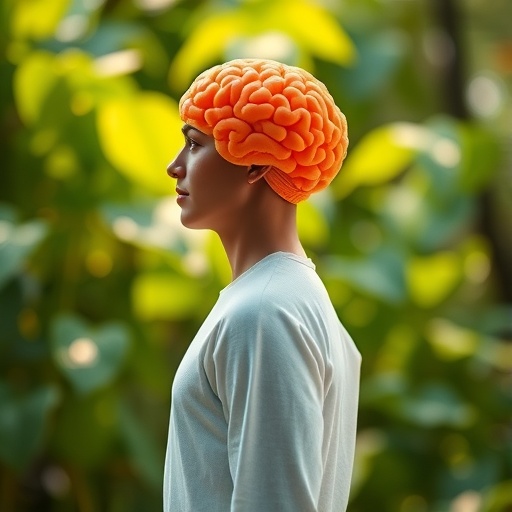
In the intricate landscape of neuroscience, one region of the brain has historically been overshadowed by more prominently studied areas: the cerebellum. Traditionally recognized for its role in coordinating movement and posture, emerging research over the past decade has illuminated the cerebellum’s significant involvement in cognitive functions such as memory formation, language processing, and executive function. Dr. Jessica Bernard, a leading neuroscientist at Texas A&M University, is spearheading groundbreaking studies that uncover how the cerebellum could serve as a critical nexus in preserving both motor and cognitive abilities, particularly as the brain ages or faces neurodegenerative challenges.
Dr. Bernard’s interest in the cerebellum is deeply personal. Witnessing her grandfather’s battle with Parkinson’s disease, a debilitating neurodegenerative disorder affecting approximately 90,000 new patients annually in the United States alone, motivated her to investigate the underappreciated functions of this brain region. Parkinson’s disease is characterized by hallmark symptoms such as tremors, rigidity, impaired balance, dementia, and fatigue — all manifestations intimately connected to cerebellar dysfunction and its interaction with broader neural circuits. Her work seeks to delineate how the cerebellum’s neural networks deteriorate in these conditions and how targeted interventions might forestall or mitigate such decline.
At the anatomical level, the cerebellum is positioned at the posterior base of the brain, comprising densely packed neurons that modulate fine motor control and maintain equilibrium. Yet, this structure’s afferent and efferent pathways extend into regions integrating sensory input with higher-order cognitive processing, suggesting that cerebellar health is paramount not only for physical coordination but also for mental acuity. Disruptions to cerebellar neurons—whether through synaptic disconnection, cell death, or loss of interconnectivity—can precipitate widespread dysfunction, impairing an individual’s ability to move seamlessly or think clearly.
.adsslot_N9o7603Jj2{width:728px !important;height:90px !important;}
@media(max-width:1199px){ .adsslot_N9o7603Jj2{width:468px !important;height:60px !important;}
}
@media(max-width:767px){ .adsslot_N9o7603Jj2{width:320px !important;height:50px !important;}
}
ADVERTISEMENT
Understanding these changes requires sophisticated methodologies. Dr. Bernard and her team utilize behavioral assessments, neuroimaging techniques such as functional MRI and diffusion tensor imaging, and electrophysiological measures to track cerebellar and cortical activity during task performance. By correlating these neurobiological data with clinical assessments of daily living functions, the research elucidates biomarkers of healthy versus pathological aging. The question at the forefront is whether neurostimulation techniques might recalibrate neural rhythms and strengthen connectivity to preserve functional abilities longer into advanced age.
One such neurostimulation method under scrutiny is Theta Burst Stimulation (TBS), a specialized form of transcranial magnetic stimulation (TMS). TBS emits rapid sequences of low-intensity magnetic pulses patterned to align with the brain’s endogenous theta wave frequency (4-8 Hz), which is implicated in learning and memory processes. Unlike conventional TMS, which uses steady-frequency pulses, TBS aims to entrain neural circuits dynamically, potentially inducing long-term potentiation-like effects that enhance synaptic plasticity. Dr. Bernard posits that TBS applied to cerebellar and prefrontal regions might revitalize neural networks responsible for both motor coordination and executive function.
This hypothesis is being rigorously tested in a longitudinal study involving 120 participants stratified into three cohorts: young healthy adults serving as a cognitive baseline, cognitively normal older adults exemplifying typical age-related changes, and older adults with mild cognitive impairment (MCI), a prodromal stage of dementia characterized by measurable cognitive deficits that do not yet severely compromise daily living. The study’s design includes comprehensive cognitive assessments, balance and gait evaluation, and neuroimaging before and after TBS intervention, aimed at discerning the neuromodulatory effects on network connectivity and functional outcomes.
Results from preliminary phases indicate that TBS may bolster participants’ performance in activities of daily living (ADL), such as dressing, mobility, and continence. These findings suggest that enhancing cerebellar-prefrontal circuitry could translate into tangible improvements in autonomy and quality of life. Dr. Bernard emphasizes that while TBS is not a cure and cannot reverse neuronal loss, its capacity to modulate neurophysiological mechanisms associated with memory, attention, and motor control holds promise for delaying the progression of neurodegenerative symptoms.
Beyond aging and neurodegeneration, Dr. Bernard’s research extends to developmental neuroscience, exploring the neurobiological substrates of early parent-infant interactions. Through collaboration with developmental psychologist Dr. Rebecca Brooker and funding from the Mental Research Institute, studies focus on the effects of estrogen fluctuations during pregnancy and postpartum on maternal brain function and infant outcomes. Employing multimodal imaging and hormonal assays, this work investigates how changing neuroendocrine states shape neural pathways linked to maternal responsiveness and child developmental trajectories.
In her role as director of the Lifespan Cognitive and Motor Neuroimaging Laboratory, Dr. Bernard fosters an interdisciplinary research environment combining expertise in statistics, nursing, kinesiology, biology, and clinical medicine. This holistic approach is vital given the brain’s complexity and the multifactorial nature of cognitive and motor disorders. The lab mentors emerging scientists such as Casey Delaney, a neuroscience graduate student contributing to current projects and exemplifying the drive to integrate fundamental neuroscience with translational applications.
This consortium-driven model underscores the necessity of collaborative efforts to tackle the brain’s enigmas. By integrating advanced neuroimaging, neuromodulation techniques, and behavioral science, Dr. Bernard’s work advances a comprehensive framework for understanding how cerebellar circuitry can be harnessed to improve outcomes across the lifespan. Future directions aim to expand TBS applications to more severe and diverse neurodegenerative diseases, potentially offering novel, non-invasive therapeutic avenues.
The implications of this research reverberate beyond academia. As the global population ages, the societal burden of diseases like Parkinson’s and Alzheimer’s escalates, highlighting the urgent need for interventions that maintain independence and cognitive health. Dr. Bernard’s investigations provide a scientific foundation for innovative strategies that transcend symptomatic treatment and target neural network preservation and restoration, fostering the prospect of extended functional longevity.
As we scale new heights in neurotechnology and our grasp of brain dynamics deepens, studies such as these illuminate a path forward—one in which the brain’s hidden potential can be unlocked to mitigate decline and enrich human life. The cerebellum, once relegated to the backstage of neuroscience, now stands front and center, offering promising keys to sustaining memory, movement, and the very essence of who we are.
Subject of Research: Neuroscience; Cerebellar Function; Neurodegenerative Diseases; Cognitive and Motor Interventions
Article Title: Unlocking the Cerebellum: Innovative Neurostimulation Approaches to Preserving Cognition and Movement in Aging
Image Credits: Chris Jarvis/Texas A&M University College of Arts and Sciences
Keywords: Human health, Human biology, Medical specialties, Neurology, Neurological disorders, Neurodegenerative diseases, Alzheimer’s disease, Parkinson’s disease, Cognitive disorders, Dementia
Tags: aging brain and motor skillscerebellum function in cognitive processescerebellum’s role in language processingDr. Jessica Bernard research studiesexecutive function and memory formationimproving quality of life through neuroscienceinterventions for neurodegenerative challengesneural networks and cognitive declineneurodegenerative disorders and brain healthneuroscience of memory and movementParkinson’s disease and cerebellar dysfunctionpreserving cognitive abilities in aging





